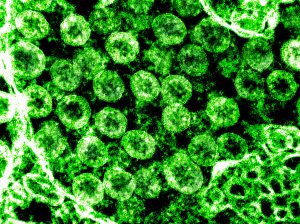Last week, the Economist Intelligence Unit (EIU) issued a report seeking to predict the global distribution and uptake of coronavirus vaccines, which is now getting started in many nations.
The report’s predictions were striking, though entirely unsurprising, in the extent to which they tracked global distributions of wealth. According to the EIU report, “The bulk of the adult population in advanced economies will have been vaccinated by mid-2022. For middle-income countries, this timeline will stretch to late 2022 or early 2023. For poorer economies, mass immunization will take until 2024, if it happens at all.”
Accordingly, things don’t look too good for Southeast Asia. To be sure, the EIU predicts Singapore to achieve widespread vaccination coverage by early next year, in line with the world’s wealthiest countries. Vietnam, too, is expected to achieve widespread vaccination coverage by mid-2022, in line with countries like Australia, Canada, Japan, and South Korea. (This prediction is also congruent with the nation’s highly successful effort to contain COVID-19.)
Thailand and Malaysia are in the next tier, and are expected to achieve widespread vaccination by late 2022. For the rest of the region, however, the prognosis is worryingly delayed: Myanmar, Laos, Cambodia, the Philippines, and Indonesia – which together make up the bulk of the region’s population – are all expected to take at least two years to reach widespread vaccination rates, and possibly longer.
This predicted trajectory diverges from Southeast Asia’s relatively good response to the virus, which appears to correlate less closely with levels of economic development. The region’s COVID-19 successes were reflected in the Coronavirus Performance Index published on January 28 by Sydney’s Lowy Institute, which ranks 98 nations on a number of key indicators, including confirmed cases, deaths, cases per million people, deaths per million people, and cases as a proportion of COVID-19 tests.
In the Lowy Institute’s index, Vietnam came in 2nd out of 98 nations, behind only New Zealand, followed by Thailand (4th), Singapore (13th), Malaysia (16th), and Myanmar (24th). This compares surprisingly well to wealthy developed nations like Japan, which ranked 45th, Germany (55th), and the United States (94th). Cambodia and Laos were not included in the Lowy Institute’s index, but both nations have seen very low infection rates, and no deaths from COVID-19. Southeast Asia’s two worst performers, which also happen to be its two most democratic and populous nations, were the Philippines and Indonesia, which ranked 79th and 85th, respectively.
According to the EIU, the challenges facing low-income countries are numerous. Many of them will be relying on World Health Organization’s COVAX initiative, which aims to secure vaccines for the world’s poorer countries. While the first 2 billion doses of vaccine will be distributed this year, these will mainly go to healthcare workers and other priority groups, and are only intended to cover around 20 percent of the population of each country. The EIU also said that COVAX supplies may also be slow to arrive, especially if delays in the production for and delivery to richer countries push back delivery dates for poorer nations.
To be sure, some Southeast Asian nations like Indonesia have secured large shipments of vaccines from manufacturers like China’s Sinovac Biotech, the UK’s AstraZeneca, and the U.S.-Germany Pfizer-BioNTech partnership. But purchasing vaccines is one thing; distributing and administering them over wide and sometimes challenging geographic areas – like remote parts of Indonesian and Philippine archipelagos, or far-flung reaches of upland Myanmar and Laos – is another.
Transport and distribution costs, in addition to the salaries for healthcare workers to administer the vaccines, could impose heavy burdens on poorer nations that have already suffered economically from coronavirus-induced lockdowns. There are also some vaccines, such as that produced by Pfizer-BioNTech, which require refrigeration at super-cold temperatures – something that will pose another daunting logistical challenge in tropical Southeast Asia.
“Given that unexpected hiccups in procuring supplies have already occurred in most developed countries, it is likely that developing countries with poor infrastructure, few healthcare workers, and inadequate refrigeration will find the rollout even harder,” the report stated. The EIU even suggests that some developing countries may end up never achieving widespread vaccination coverage.
This likely shortfall creates a potential strategic opening for any nation able to provide vaccine coverage to the nations that need it. It is notable that the poorer nations of Southeast Asia have invested more heavily in securing access to Chinese-made vaccines, while Beijing has promised many governments in the region priority access to its inoculations, in line with the region’s strategic importance to China.
However, the jury is very much out on whether China’s “vaccine diplomacy” will ultimately succeed in Southeast Asia. There are just too many unknowns, from the uncertain efficacy of Chinese firms’ vaccines, to the question of how China can balance regional outreach with the vaccination of its own 1.4 billion people. The EIU’s projections suggest, the full wash-up from the COVID-19 pandemic is unlikely to become clear for several years.

































